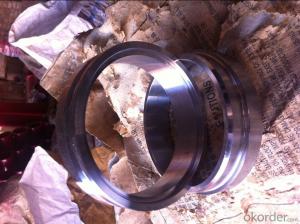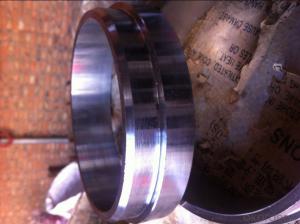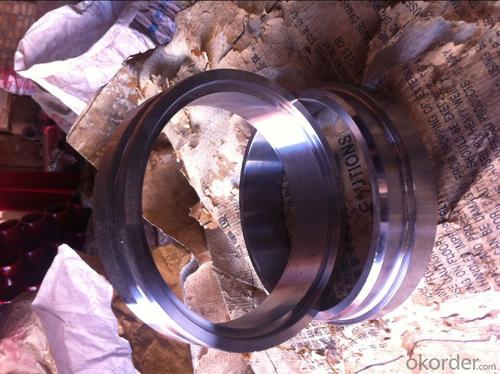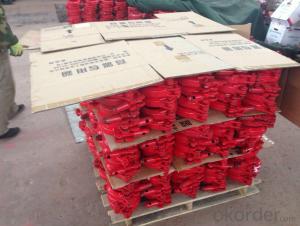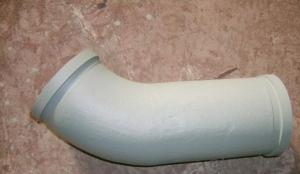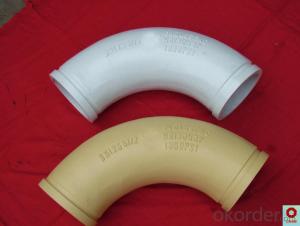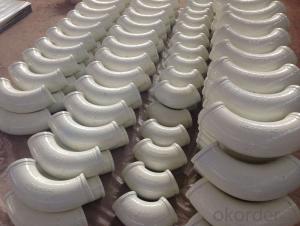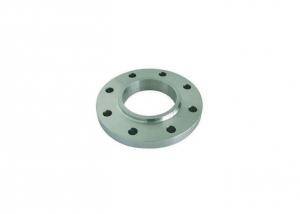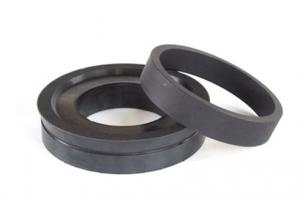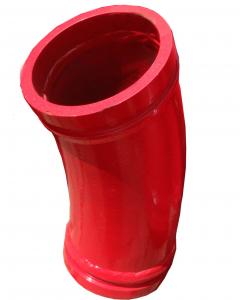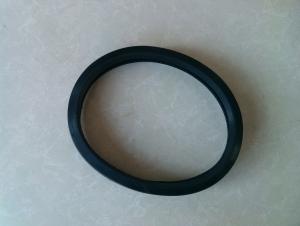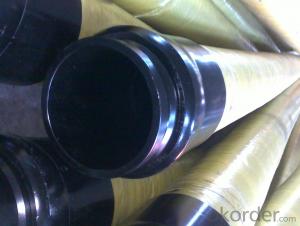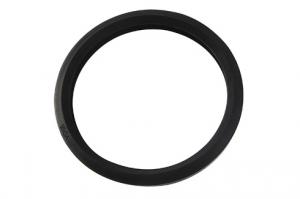SCHWING Single Side Flange DN125mm Width 35mm
- Loading Port:
- Tianjin
- Payment Terms:
- TT or LC
- Min Order Qty:
- 50 set
- Supply Capability:
- 5000 set/month
OKorder Service Pledge
OKorder Financial Service
You Might Also Like
Product Description:
Product Name: Concrete Pump Flange
1. Specification of Concrete Pump Flange
Materials: Steel 20
Inner Diameter: 125mm
Notes: total series of concrete pump elbows for different brand concrete pump(PUTZMEISTER, SCHWING, CIFA, SANY, ZOOMLION, IHI, KYOKUTO Etc)available from us.
2. Application of Concrete Pump Flange
Our concrete pump elbows have been successfully exported to many countries from 1998, Our main markets asbelow: Middle East, Southeast Asia, America, Brazil, Italy, Russia, South Africa etc
Aiming at the largest concrete pump parts manufacturer, and reliable, professional supplier in China, we can
supply concrete pump elbows, delivery pipes, casting or forging couplings, end rubber hoses, rubber pistons,
tungsten wear plates, delivery cylinders, and other hydraulic parts, one stop service for your concrete pump
parts and accessory business.
3. Package and Delivery of Concrete Pump Flange
Every 60pcs put in one seaworthy wooden box, and 20 boxes in one 20feet container.
Optional wood materials: veneer wood or other wood.
- Q: What is the difference between concrete pump and ground pump?
- The pump is actually the day Linuo arm frame of concrete pump boom is known, a few day, after mixing through the boom pump, the efficiency is very high
- Q: Can I get spare parts for both concrete pumps with and without pressure washers?
- Yes, you can get spare parts for both concrete pumps with and without pressure washers. Many manufacturers and suppliers offer a wide range of spare parts for concrete pumps, including those with pressure washers attached. These spare parts can include components such as hoses, nozzles, valves, cylinders, seals, filters, and other accessories needed for the proper functioning of the concrete pump. Whether you have a concrete pump with or without a pressure washer, it is important to ensure regular maintenance and timely replacement of worn-out or damaged parts to ensure optimal performance and longevity of the equipment.
- Q: How often should concrete pump control boxes be inspected and replaced?
- Concrete pump control boxes should be inspected regularly to ensure proper functioning and safety. The frequency of inspections and replacements will depend on various factors including the usage of the concrete pump, the operating conditions, and the manufacturer's recommendations. In general, it is advisable to inspect the control box at least once a year or as per the manufacturer's guidelines. However, if the concrete pump is used extensively or subjected to harsh operating conditions, more frequent inspections may be necessary. This includes inspecting the electrical connections, switches, buttons, and indicators for any signs of wear, damage, or malfunction. Additionally, it is important to conduct inspections after any significant maintenance or repair work on the concrete pump, as well as after any incidents or accidents. Regular inspections help identify any potential issues early on, allowing for timely repairs or replacements, thereby minimizing the risk of breakdowns or accidents. As for replacements, control boxes should be replaced if they are damaged beyond repair or if they are outdated and no longer meet safety standards. It is important to consult the manufacturer or a qualified professional to determine the appropriate replacement schedule based on the specific conditions and usage of the concrete pump. Remember, regular inspections and timely replacements of concrete pump control boxes are crucial to ensure the safe and efficient operation of the equipment.
- Q: Can I get spare parts for both concrete pumps with and without boom control systems?
- Yes, you can get spare parts for both concrete pumps with and without boom control systems.
- Q: How often should hopper grate pin retainers be inspected or replaced in a concrete pump?
- Hopper grate pin retainers in a concrete pump should be inspected regularly, ideally before each use, to ensure proper functioning and prevent any potential issues. If any signs of wear, damage, or looseness are detected, the retainers should be replaced immediately to maintain the efficiency and safety of the concrete pump operation.
- Q: How do I properly maintain and replace hydraulic motors in concrete pump spare parts?
- Proper maintenance and replacement of hydraulic motors in concrete pump spare parts is crucial to ensure the smooth operation and longevity of the equipment. Here are some steps to guide you in maintaining and replacing hydraulic motors effectively: 1. Regular Inspection: Perform routine inspections of the hydraulic motors to identify any signs of wear, damage, or leaks. Check the fluid levels and ensure they are at the recommended levels. 2. Cleanliness: Keep the hydraulic motors clean by removing any dirt, debris, or contaminants. This helps prevent the motors from overheating and minimizes the risk of damage to the internal components. 3. Fluid Maintenance: Regularly check and change the hydraulic fluid according to the manufacturer's recommendations. Clean and replace the filters to ensure the fluid is free from any particles that can cause damage to the motors. 4. Lubrication: Lubricate the hydraulic motors as per the manufacturer's instructions. This helps reduce friction and wear on moving parts, improving the overall performance and lifespan of the motors. 5. Proper Usage: Operate the concrete pump within the recommended load and pressure limits specified by the manufacturer. Overloading or excessive pressure can cause stress on the hydraulic motors, leading to premature failure. 6. Timely Replacement: Keep track of the service life and usage of the hydraulic motors. Over time, these motors may wear out and become less efficient. Replace them promptly when necessary to prevent any disruption to the concrete pumping operations. 7. Seek Professional Assistance: If you are unsure about maintaining or replacing hydraulic motors, it is advisable to seek professional assistance. They have the expertise and knowledge to carry out the necessary tasks correctly, ensuring the safety and optimal performance of the concrete pump spare parts. By following these steps, you can properly maintain and replace hydraulic motors in concrete pump spare parts, ensuring the longevity and efficiency of your equipment.
- Q: How long does it take to receive concrete pump spare parts after placing an order?
- The time it takes to receive concrete pump spare parts after placing an order can vary depending on various factors such as the availability of the parts, shipping methods, and the location of the supplier. However, it typically takes anywhere from a few days to a couple of weeks for the parts to be delivered. It is always advisable to check with the supplier or manufacturer for a more accurate estimate based on your specific order.
- Q: How do I maintain the performance of concrete pump spare parts in extreme weather conditions?
- To ensure the efficiency and longevity of your equipment, it is crucial to maintain the performance of concrete pump spare parts in extreme weather conditions. Consider the following tips: 1. Conduct regular inspections to detect signs of wear and tear early on. Extreme weather can accelerate part deterioration, so staying vigilant is important. 2. Keep spare parts clean to prevent clogging or damage caused by dirt, debris, or contaminants that may accumulate in extreme weather conditions. 3. Use appropriate lubrication for smooth functioning. Opt for lubricants designed for extreme weather, with high viscosity and resistance to temperature fluctuations. 4. Protect spare parts from direct exposure to extreme heat or freezing temperatures by using covers or enclosures. 5. Store spare parts in a dry, temperature-controlled environment when not in use. Extreme weather can cause expansion or contraction, potentially leading to damage. Controlled storage helps maintain integrity and performance. 6. Monitor and replace worn-out parts in a timely manner to maintain performance. Extreme weather conditions can accelerate wear and tear, so proactive replacement is crucial. 7. Consult the manufacturer for specific requirements on maintaining spare parts in extreme weather. They can offer expert advice and guidance for optimal performance. By following these tips, you can effectively preserve the performance of concrete pump spare parts in extreme weather conditions, ensuring smooth and efficient equipment operation.
- Q: How often should concrete pump water pumps be inspected and replaced?
- The frequency of inspection and replacement for concrete pump water pumps depends on several factors including the workload, operating conditions, and maintenance practices. Generally, it is recommended to inspect the water pump at least once a month to ensure its proper functioning. During the inspection, it is important to check for any leaks, unusual noises, or signs of wear and tear. If any issues are identified, immediate action should be taken to resolve them, such as repairing or replacing damaged parts. As for replacement, it is difficult to provide an exact timeframe as it varies depending on the quality of the pump, the intensity of use, and the level of maintenance. However, a general guideline is to consider replacing the water pump every 1-2 years for heavy usage or every 3-5 years for moderate usage. Regular maintenance, such as cleaning and lubricating the pump, can extend its lifespan and minimize the need for frequent replacements. It is important to note that these recommendations are general guidelines and may vary depending on the specific manufacturer's instructions, industry standards, and local regulations. It is advisable to consult the manufacturer's guidelines and seek professional advice from experts in the field to determine the appropriate inspection and replacement schedule for concrete pump water pumps in your specific circumstances.
- Q: How to judge the concrete pipeline blockage?
- Judgment of blocking position: blockage usually occurs in bends, cones, and vibrating sections. At this point, the hammer can be beaten along the pipe, the sound is boring, blocking the place; sound crisp place is normal
Send your message to us
SCHWING Single Side Flange DN125mm Width 35mm
- Loading Port:
- Tianjin
- Payment Terms:
- TT or LC
- Min Order Qty:
- 50 set
- Supply Capability:
- 5000 set/month
OKorder Service Pledge
OKorder Financial Service
Similar products
Hot products
Hot Searches
Related keywords
